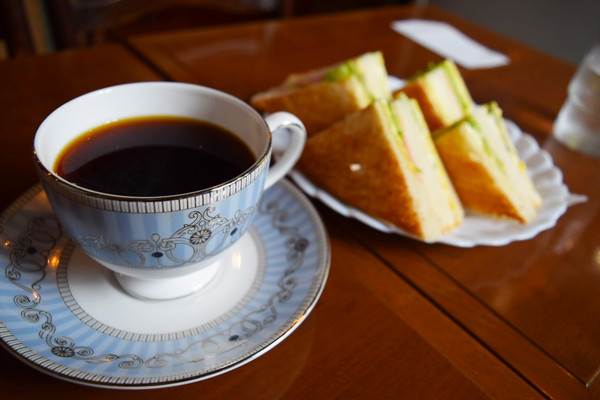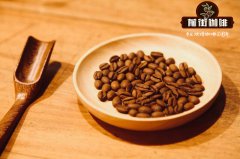Cross-Strait Coffee official website _ Cross-Strait Coffee menu and Price Cross-Strait Coffee compound Management Model
"Coffee official website on both sides of the strait"

Professional coffee knowledge exchange more coffee bean information please follow the coffee workshop (Wechat official account cafe_style)
Cross-strait coffee is already well-known in the catering market on both sides of the strait. It is worth mentioning that Yang Jinfa, chairman of cross-strait coffee, joined Chinese mainland as early as 1989 and used to make zippers in Shenzhen, Guangdong Province. ten years later, he realized that the manufacturing industry could no longer survive and invested in the catering service industry. to create cross-strait coffee with more than 400 branches of Chinese mainland today.
Cross-strait coffee is already well-known in the catering market on both sides of the strait. It is worth mentioning that Yang Jinfa, chairman of cross-strait coffee, joined Chinese mainland as early as 1989 and used to make zippers in Shenzhen, Guangdong Province. ten years later, he realized that the manufacturing industry could no longer survive and invested in the catering service industry. to create cross-strait coffee with more than 400 branches of Chinese mainland today.
Cross-strait coffee is located in the national flagship store in Hangzhou. Through small bridge and flowing water's landscape design, what is reflected in front of you is the eye-catching Chinese red sofa, which is decorated with western-style modern decoration, which makes people feel cordial and modern.
"We emphasize the integration of Chinese culture into coffee and western food culture, which is different from Starbucks," said Yang Jinfa, sitting in the top teppanyaki box in the flagship store, explaining the secret of the difference between coffee and Starbucks on both sides of the strait.
The cross-strait coffee business is complex, selling not only coffee, but also Japanese food, Western steak, fried rice, fried noodles and other business lunches, and even launched a 1680 yuan teppanyaki, completely subverting the impression of the "coffee shop."
Seeing the confusion on the face of the visitors, Yang Jinfa explained without asking: "after all, unlike Taiwan and advanced Europe and the United States, China has not yet grown to that level. Coffee shops sell coffee and steak shops sell steak in one step." Therefore, we target white-collar workers and high-end consumers to provide a full range of catering services. They usually have business chat and drink coffee, ladies enjoy afternoon tea at leisure in the afternoon, teppanyaki, a high-end steak in the evening, and even sell food for the occasion during the festival. for example, "cross-strait moon cakes" will be launched during the Mid-Autumn Festival.
Observe the wind direction of investment and be determined to transform the service
Despite the appearance of Yang Jinfa, a restaurant tycoon, he used to start as a zipper.
"in the 1990s, I followed the first batch of Taiwan businessmen to set up factories in China and used labor-intensive to make money." but after the mainland's macro-control in 1996 and 1997, Yang Chin-fa found that there was a problem. Local people buy bigger machines and equipment and compete at lower prices. "Taiwan businessmen have no advantage at all, and I began to think about transformation."
Then he came to Hangzhou, saw the beautiful scenery of the West Lake, and fell in love with the slow pace of life in Hangzhou. Coupled with the fact that housing prices in Hangzhou were very cheap at that time, he settled down to invest in real estate and actively buy a storefront.
Fifteen years ago, the house price in Hangzhou was only 2000 yuan per square meter, which was nearly NT $20, 4000 per ping at an exchange rate of less than 4 yuan to the Taiwan dollar at that time, which is as cheap as in Taiwan in the 1960s.
Now, however, as long as you can see the house on the West Lake, it is no longer unusual to see NT $1.5 million per ping.
"at that time, you didn't have to do anything. It was enough to buy a house and wait for it to go up 10 or 20 times." Yang Chin-fa bought more and more, and even attacked the storefront. It was only then that he began to want to make use of the storefront, and the restaurant should be a way, so he went into running a coffee shop, which was the predecessor of coffee on both sides of the strait, and also represented his shift from manufacturing to the service industry.
It is not troublesome to pave the way with Taiwan experience.
One day in 2003, when I read the news about the talks between the two sides of the strait, I immediately named my coffee shop Coffee on both sides of the Strait. "the name of the two sides of the strait will be popular for at least 50 years," he says with a smile. so he registered all the trademarks on both sides of the strait and registered more than 200 at once, including real estate, hotels, clothing and watches on both sides of the strait.
Fortunately, Taiwanese have more experience in the service industry and have know-how in the service industry, so they have an advantage in China. He even paid heavily to hire Taiwan's teppanyaki famous chef Chen Hancheng, who once cooked for celebrities such as Lien Chan, and Japanese cuisine master Zhang Liangyi to transplant Taiwan experience. "mainlanders are not patient enough and are not good at operating channels," says Yang Chin-fa. this gives an opportunity for the growth of coffee on both sides of the strait.
Yang Jinfa is well aware that in the process of China's economic development, the white-collar and high-end consumer market will become bigger and bigger, especially the prevalence of "face-saving consumption". Looking at this, the top blue mountain coffee on both sides of the strait costs 78 yuan (about NT $400), and a top teppanyaki also charges 1680 yuan. "if it is sold too cheaply, business is not good," he says. Teppanyaki, a coffee from both sides of the strait, costs an average of 1000 yuan, while the cheapest set meal is ordered by fewer people.
Since its opening in 2003, there have been more than 400 cross-strait coffee stores, and last year it received US $30 million from Goldman Sachs and Watson Venture Capital.
Yang Jinfa's goal is to reach the size of 5000 stores in China within 10 years, with an average of hundreds in each province. Nearly 30 new stores have been opened so far this year, and it is expected to add 100 a year.
Despite the global recession, cross-strait coffee has continued to grow since last year, growing by 10% in the first quarter of this year, indicating that the mainland's domestic demand market has not been affected at all.
Sitting on the branch of cross-strait coffee on the edge of the West Lake in Hangzhou, this used to be the "Mirror Lake Hall" where revolutionary Jie Qiu Jin lived. Cross-strait coffee was granted the right to use and became a specialty store next to the West Lake. Looking at the beautiful scenery of the West Lake at night and watching young men and women enjoy a steak dinner of nearly 100 yuan, it is not difficult to understand why coffee from both sides of the strait has successfully infiltrated the Chinese mainland.
Important Notice :
前街咖啡 FrontStreet Coffee has moved to new addredd:
FrontStreet Coffee Address: 315,Donghua East Road,GuangZhou
Tel:020 38364473
- Prev

What kind of person is Freeman? Why are investors optimistic about Blue bottle?
Professional coffee knowledge exchange more coffee bean information Please pay attention to Coffee Workshop (Wechat official account cafe_style) Blue bottle originated in Oakland, California, USA. In 2002, it was just a coffee stall at the farmer's market. The first shop was still located in the garage, and there were no seats. Two years later, the first physical store was established. Freeman grew up in California and studied single Reed from an early age.
- Next

Cross-strait Coffee official website _ how much is the fee for cross-strait coffee franchise
= "Cross-Strait Coffee official website" = = professional coffee knowledge exchange more coffee bean information please pay attention to coffee workshop (Wechat official account cafe_style) coffee, Western food and other Western food, if integrated with Chinese traditional culture, I believe it will create a new market comprehensive effect (Synergy). Before it is popular in mainland coffee shops, cross-strait coffee has long seen the mainland coffee market.
Related
- What brand of black coffee is the most authentic and delicious? what are the characteristics of the flavor of the authentic Rose Summer Black Coffee?
- Introduction to the principle and characteristics of the correct use of mocha pot A detailed course of mocha pot brewing coffee is described in five steps.
- Which is better, decaf or regular coffee? how is decaf made?
- How much is a bag of four cat coffee?
- How about four Cat Coffee or Nestle Coffee? why is it a cheap scam?
- Which is better, Yunnan four Cats Coffee or Nestle Coffee? How about cat coffee? is it a fake scam? why is it so cheap?
- How about Cat Coffee? what grade is a hoax? which instant coffee tastes better, four Cat Coffee, Nestle Coffee or G7 coffee?
- Process flow chart of coffee making-Starbucks coffee making process what coffee tastes good at Starbucks
- The top ten best coffee beans in the world Rose summer coffee or Tanzanian coffee tastes good
- Yunnan four cat coffee is good to drink?_four cat coffee is a big brand? four cat blue mountain coffee is fake?

